Picture this: your car breaks down on Monday morning, your kid needs emergency dental work on Wednesday, and Friday brings news of potential layoffs at work. Sound stressful? It should be—especially if you’re among the 59% of Americans who don’t have enough savings to cover an unexpected $1,000 emergency expense.
But here’s the thing: you don’t have to live paycheck-to-paycheck forever. With the right savings strategy, you can build financial security that lets you sleep soundly at night.
Why Your Savings Amount Matters More Than Ever
Let’s be honest—2025 hasn’t made saving money any easier. Nearly 3 in 4 Americans (73 percent) are saving less for emergency expenses due to inflation/rising prices, elevated interest rates, or a change in income or employment. Yet here’s the encouraging news: 30% of adults said they have more emergency savings now compared to one year ago.
You’re not alone in wondering how much you should stash away. The answer isn’t one-size-fits-all—it depends on your life stage, income stability, and personal circumstances.
The Emergency Fund Foundation: Your Financial Safety Net
Before diving into specific numbers, let’s clarify what counts as an emergency fund. Think of it as your financial fire extinguisher—a dedicated pool of money (typically in a high-yield savings account) reserved for genuine emergencies like:
- Job loss or reduced income
- Medical bills not covered by insurance
- Major home or car repairs
- Family emergencies requiring travel
Where to keep it: Your emergency fund should live in a liquid, FDIC-insured account where you can access it quickly without penalties. Money market accounts and high-yield savings accounts are your best bets.
How Much Should You Save? It Depends on Your Stage of Life
Early-Career Explorer (Ages 22-30)
Target: 3 months of essential expenses Income range: $40K-$65K annually
If you’re just starting your career, don’t feel pressure to have a massive emergency fund immediately. Focus on building that initial $1,000 buffer first, then gradually work toward three months of expenses.
Your priorities:
- Start with $500-$1,000 starter emergency fund
- Pay off high-interest credit card debt
- Build toward a 3-month emergency fund
- Begin modest retirement contributions
Realistic timeline: 12-18 months to reach your 3-month goal
Growing-Family Planner (Ages 30-45)
Target: 6 months of expenses Household income: $75K-$150K combined
With a family depending on you, your safety net needs to be more robust. Consider creative money-saving tips to free up more cash for savings while managing childcare costs and mortgages.
Your unique challenges:
- Dual incomes but higher fixed expenses
- Need to balance emergency savings with saving for house down payments
- Education costs for children
Strategy tip: If both partners work, base your emergency fund on the higher earner’s income to ensure you can maintain your lifestyle if one person loses their job.
Gig-Economy Navigator (Ages 25-40)
Target: 4-6 months minimum (consider 8-12 months) Income: Highly variable ($30K-$100K)
Irregular income means you need a more substantial buffer. Your emergency fund serves double duty—covering true emergencies and smoothing out income fluctuations between gigs.
Special considerations:
- No employer-provided benefits
- Quarterly tax payments
- Equipment replacement costs
- Health insurance gaps
Pro tip: During high-earning months, aggressively boost your emergency fund. Create a separate “tax fund” for quarterly payments.
Pre-Retiree Strategist (Ages 50-65)
Target: 12-18 months of expenses Income: $80K-$200K (peak earning years)
You’re in the final stretch before retirement, making this the most critical time to maximize your financial cushion. Healthcare costs and potential market volatility make a larger emergency fund essential.
Your focus areas:
- Healthcare cost buffer (COBRA, Medicare gaps)
- Bridge money for early retirement
- Protection against late-career job loss
- Balance between emergency savings and retirement catch-up contributions
Value-Conscious Spender (Ages 35-50)
Target: 3-6 months of expenses Income: $60K-$120K
You’ve hit your stride financially, but lifestyle inflation can be your enemy. The key is maintaining discipline while enjoying your success.
Common pitfalls to avoid:
- Upgrading lifestyle faster than income growth
- Confusing wants with needs when calculating expenses
- Neglecting to adjust emergency fund as expenses increase
Beyond the Emergency Fund: How Much Total Savings?
Your emergency fund is just one piece of the puzzle. Here’s how to think about your overall savings strategy:
The 15-20% Rule
Aim to save 15-20% of your gross income across all savings and investment goals. This includes:
- Emergency fund contributions
- Retirement savings
- Short-term goal savings (vacation, home down payment)
- Long-term investments
Where the Rest Goes
Once your emergency fund is fully funded, redirect those contributions to:
- Maximize employer 401(k) match
- Pay down high-interest debt
- Build wealth through diversified investments
- Save for specific goals (house, kids’ education)
Smart Strategies to Build Your Savings Faster
1. Automate Everything
Set up automatic transfers from checking to savings right after each paycheck. This “pay yourself first” approach removes the temptation to spend that money elsewhere.
2. Use the Right Account
Don’t let your emergency fund languish in a low-yield checking account. Shop around for the best high-yield savings accounts to maximize growth while maintaining liquidity.
3. Separate Wants from Needs
When calculating your emergency fund target, focus on essential expenses only:
- Housing (rent/mortgage, utilities, insurance)
- Food (groceries, not dining out)
- Transportation (car payment, gas, insurance)
- Minimum debt payments
- Essential insurance premiums
4. Find Extra Money
Look for ways to save money on a tight budget and redirect those savings to your emergency fund:
- Cancel unused subscriptions
- Negotiate bills (phone, cable, insurance)
- Use cashback credit cards responsibly
- Sell items you no longer need
Common Savings Mistakes to Avoid
Mistake #1: Keeping Too Much in Checking
Many people wonder how much money should I have in my checking account. The answer: only enough for monthly expenses plus a small buffer. Excess funds should move to higher-yield savings.
Mistake #2: Raiding Your Emergency Fund for Non-Emergencies
A vacation isn’t an emergency. A new TV isn’t an emergency. Be strict about what qualifies, or you’ll find yourself back at square one when a real emergency hits.
Mistake #3: Ignoring Inflation
External factors such as economic conditions affect your purchasing power. Review and adjust your savings targets annually to account for inflation.
Mistake #4: All-or-Nothing Thinking
Don’t let perfect be the enemy of good. Even $25 per week adds up to $1,300 per year. Start small and increase gradually.
When to Reassess Your Savings Goals
Life changes, and so should your savings strategy. Reevaluate your targets after:
- Job changes (promotion, career switch, unemployment)
- Family changes (marriage, divorce, new baby)
- Major purchases (home, car)
- Health changes affecting expenses
- Economic Shifts Affecting Your Industry
The Psychology of Saving: Making It Stick
Building substantial savings requires changing your relationship with money. Here are psychological tricks that work:
Make It Visual
Track your progress with charts or apps. Seeing your emergency fund grow creates positive reinforcement.
Celebrate Milestones
Reward yourself (modestly) when you hit savings goals. This creates positive associations with saving money.
Separate Temptation
Keep your emergency fund in a different bank from your checking account. The extra step to access it reduces impulse spending.
Building Your Action Plan
Ready to take control of your financial future? Here’s your step-by-step action plan:
Week 1-2:
- Calculate your monthly essential expenses
- Determine your emergency fund target based on your life stage
- Research and open a high-yield savings account
- Set up automatic transfers
Month 1-3:
- Build your starter emergency fund ($500-$1,000)
- Track expenses to identify additional savings opportunities
- Create a paycheck budget to optimize your cash flow
Month 4-12:
- Gradually increase automatic savings transfers
- Work toward your full emergency fund target
- Resist the urge to tap into savings for non-emergencies
Ongoing:
- Review and adjust your savings rate annually
- Rebalance between emergency savings and other financial goals
- Stay informed about money management tips and strategies
Your Financial Future Starts Today
Remember, more than half of Americans also said they have more emergency savings than credit card debt, an improvement from previous years. This shows that progress is possible—and you can be part of this positive trend.
The question isn’t whether you can afford to save; it’s whether you can afford not to. Every dollar you save today is a dollar working for your peace of mind tomorrow.
Your emergency fund isn’t just about money—it’s about freedom. Freedom from financial stress, freedom to take calculated risks, and freedom to handle whatever life throws your way.
Start small, stay consistent, and watch your financial confidence grow along with your savings balance. Your future self will thank you for the steps you take today.
Ready to take the next step? What’s stopping you from setting up that automatic transfer today? Share your biggest savings challenge in the comments below, and let’s problem-solve together. And if this guide helped you, share it with someone who needs to read it—because financial security is something everyone deserves.
Learn more about building wealth and managing your finances at Wealthopedia.com

























